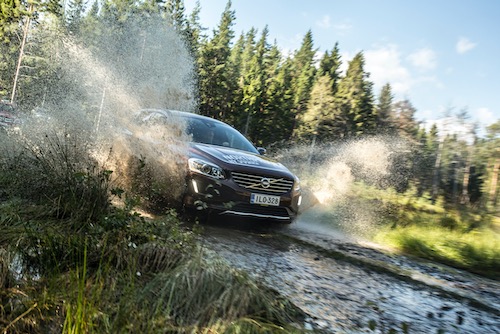
With the current autumn, we know that winter is approaching very fast. Because of this it is important to start thinking of the tyre options that are available. If you live in an area that doesn’t really have any winter weather, it is easy as you can drive with your summer tyres the whole year. However, if you do experience some winter weather, with snow and ice, even if not very often you will need to be prepared to have winter approved tyres. If the winter conditions are uncommon and you are not dependent on your vehicle, then you can just skip using the car the days that you have winter weather.
Most people, however, tend to be dependent on their cars and too many still try to use their vehicles with summer tyres even though you have snow and ice. This can be very dangerous, and it is the reason why you see so many accidents occurring when a snowstorm hits the country. The problem is that summer tyres are not made for driving in cold temperatures or to be able to handle snow and ice. The summer tyres turn hard at low temperatures and are therefore not able to provide the necessary grip that you will need for safe driving.
This is where the winter approved tyres come into play. These tyres are designed to handle low temperatures and provide the necessary grip that you will need for safe driving. There are 3 different types of tyres that are approved for winter use, they are 2 types of dedicated winter tyres and one is an all year around option. For the dedicated tyres you have the so-called studded and non-studded options and for the all year round you have the all-weather tyres. The studded tyres are the so-called classical winter tyres, that uses metal studs to provide excellent grip on ice and have a specially designed tread pattern to provide excellent grip on snow. They are also good at handling slush so that you can prevent slushplaning from occurring.
The non-studded tyres don’t have metal studs and instead uses a combination of innovations in the tread to create grip. They also use added grip particles to create a surface that provides you with grip on ice. They have similar tread pattern as studded tyres to provide you with grip on snow. Without studs they are more flexible and are not covered by any restrictions when it comes to their use. They are still dedicated winter tyres and should not be used during the warm season, as they will wear out much faster in the warm weather.
The final option is all-weather tyres, which is a great option for areas that only have occasional winters, but you still want to make sure that you and your family is safe. All-weather tyres have a tread design that can handle both snow and ice as well as dry and wet summer roads. The rubber compound is also designed to stay soft during the full temperature range without getting too soft at high temperatures or too hard at low temperatures.
For more information regarding different winter tyre options, visit: https://www.nokiantyres.com/